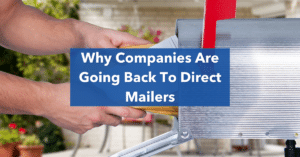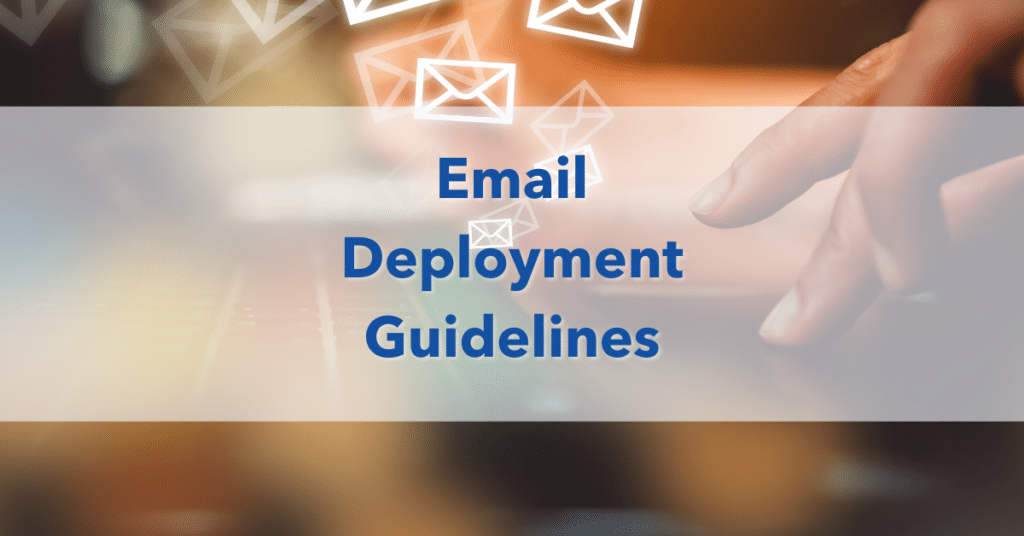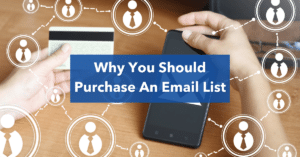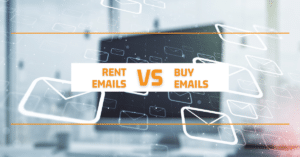
Why Companies Are Going Back To Direct Mailers
Why Companies are Going Back to Direct Mailers For the last few years, email marketing data has been on the rise and at the forefront
Sending out mass emails today can be rather difficult with the latest CAN-SPAM laws and guidelines. When buying an email list from a 3rd party provider, it is important to know what tasks are achievable and what tasks are unachievable. This way you can maximize the ROI on your next email campaign. That way when you buy an email list, you’ll be ready to send your email campaign right away.

Not all email deployment platforms are created equally. Many have various selling points that range from their design concepts to their ability to deploy emails from a 3rd party list. This is why it is important to know what an email deployment platform is and which ones can be used for 3rd party email deployments.
Email deployment platforms are designed to send your email campaign out to lists of clients, subscribers, and/or prospects. Many have taken email sends a step further, by allowing the creator to develop mobile responsive designs and elements that aren’t found in your typical email system. These elements include banners, embedded videos, social follow icons, and much more. The platforms can also perform timed sends, where the emails are scheduled out in advance and can include email automation. Another benefit of having an email deployment platform is getting email KPIs such as click-through rates and email opens.
Platforms that allow for 3rd party email send typically are for single use. What they will do is send out an email to your desired list, then deliver you the contacts that have opted out of receiving more emails from your company. Prior to sending out your email, you’ll want to purchase an email list from a reputable 3rd party email list company, like Mailing Lists Direct. After you have deployed your email (through an email deployment system listed below) you’ll be given a list of contacts that have opted out of receiving any emails from your company. With this opt-out list, you will want to make sure those on the list are removed from any further email communication with your company/brand.
Note: On all 3rd party email sends, both “How the contact was opted-in” and “How to opt-out of the email list” should be present at the footer of the email as a disclaimer.
Common 3rd party email send platforms:
It’s important to know that you can attempt to send 3rd party email lists through these platforms. However, if they catch you doing this, they will blacklist you from the platform and prevent you from sending out emails. This is why it is important to only use these platforms for those that have directly opted-in to your marketing list.
Common email deployment platforms:
The CAN-SPAM Act in the United States is not difficult to comply with if you are aware of a few simple criteria. Just follow the email guidelines below.
Make it easy to unsubscribe. You must have a functional, web-based opt-out method that is active for at least 30 days after your message is deployed. All opt-out requests must be honored within 10 days of their filing. You must respect any opt-out requests you receive as the “sender” of the email message, regardless of the service provider you use now or in the future. If you have received opt-out requests from anyone through any email marketing in the past, you must provide those addresses to any email services company to suppress from your campaigns.
Physical or postal address, and company name. Your physical (non-web) address must be clearly visible in the message. It is unlawful to omit it or use methods to conceal it. A post office box is an appropriate “real world” address as long as it offers a useful way for others to identify and connect with you. Typically companies will place their physical address, at the footer of the email.
Avoid misleading content. Your subject line should give a good indication of the real content of your email. It is a violation to use deceptive or misleading subject lines or content. Your header information (for example, the “From” line) must not be misleading or false.
If you are sending your emails via B2B, it’s important to note the different types of Anti-Spam systems that could prevent your marketing efforts from succeeding. There are ways around the Anti-Spam systems and ways of avoiding these traps.
Three (3) types of anti-spam systems
Integrated: built into corporate mail servers (i.e. SpamAssassin, MS Forefront).
Cloud-based SaaS: spam filtering before it reaches the corporate mail (i.e. Postini).
Appliance: actual mail filterer servers that sit on-premise in a customer’s location.
Corporate email policies are typically more strict on how much mail can be received into their server at one time.
It is important that you restrict the amount of mail you send to any single server at any given moment. When you exceed 50-100 email accounts per domain, we recommend slowing your email deployment.
If you have more than a 100 per domain, we recommend two options:
In following these recommendations, do understand that they will not prevent your emails from being caught by Anti-Spam systems. However, they do give you the best chance at avoiding be caught in these systems.

Why Companies are Going Back to Direct Mailers For the last few years, email marketing data has been on the rise and at the forefront

How to Create a Personalized Direct Mail Piece Adding personalized elements to your mail piece increases response rates. Mail recipients prefer to receive mailers that

Using Business Mailing Lists to Drive Leads Finding new business leads can be a tricky process, whether you are relying on yourself, your marketing team,

How to Develop Content that Works “My website is a beast that must be fed,” a real estate broker recently lamented. And the website’s favorite

8 Reasons to Purchase an Email List An accurate email list has the power to jumpstart new businesses or give some much-needed traction to older

Why Rent or Buy an Email List? When it comes to email marketing, you may have heard that renting or buying email lists is always
"*" indicates required fields
